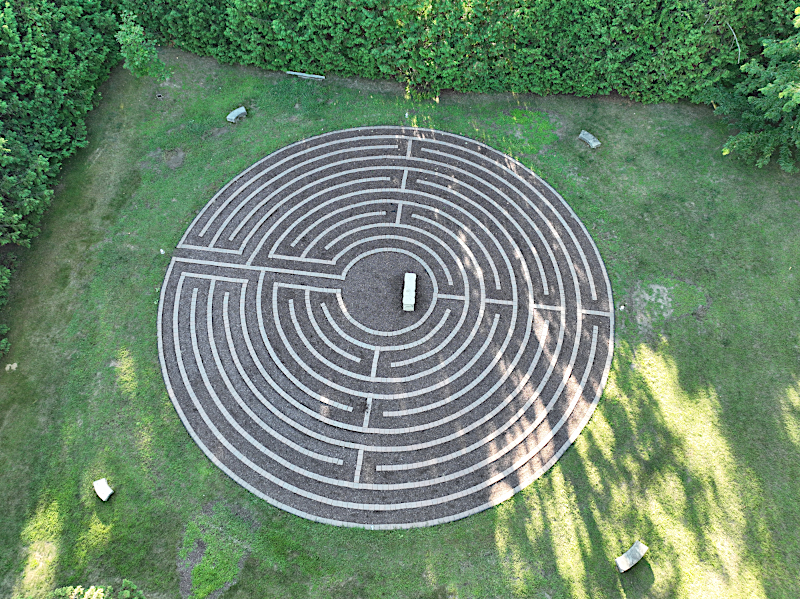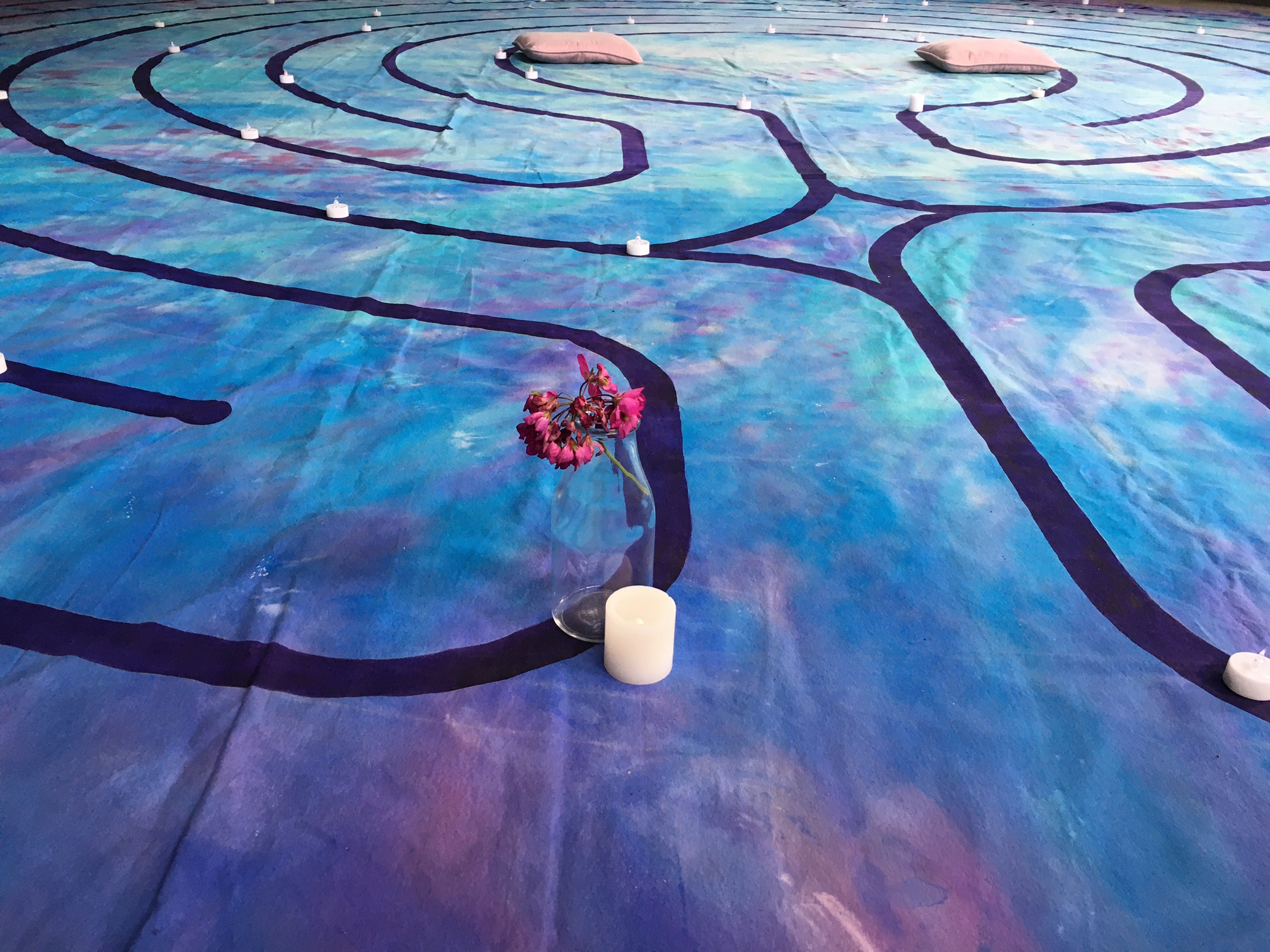
Our labyrinth services include the facilitation of group and individual walks; general and thematic presentations and workshops on labyrinth history and uses; and the integration of the labyrinth experience into retreats, conferences, and special events. Galilee Centre has both outdoor and indoor labyrinths available for guests.
If you would like to visit the labyrinth, or to participate in an upcoming program please call 613-623-4242 ext.21 or email info@galileecentre.com.
Click here for a PDF copy of the Four Guidelines to Walking the Labyrinth
Thank you to Susan Kehoe, a Certified Veriditas labyrinth facilitator and Coordinator of Contemplative Outreach Eastern Ontario/ West Quebec, for providing the following information for our labyrinth users.

The Labyrinth: A Path of Prayer: A labyrinth can be described as a walking meditation path or path of prayer, the path of the seeker, the pilgrim. The Labyrinth has ancient and anonymous origins. A geometric pattern that is universal to all humanity. Labyrinths have been found in many cultures all over the world- on coins, pottery, tablets, and tiles dating as far back as 5000 years. Many patterns are based on spirals and circles mirrored in nature. The labyrinth is not a maze, it is a single path into the centre and back out with no dead ends or cul de sacs. They have historically been used in both group ritual and for private meditation, and there are numerous different designs, Most often constructed in the form of a circle, symbolizing unity, oneness or wholeness. Labyrinths are open to all people and all ages as a non-denominational, cross-cultural blueprint for well-being. The practice of labyrinth walking is an embodied practice assisting in the restoring of body mind and spirit balance.
The Galilee Labyrinth: This Galilee outdoor labyrinth was built in year 2000 a Millennium project supported by the Oblate community, Board, and staff. It is modelled after the Labyrinth in Chartres Cathedral, France. Though it is considered a Chartres style 11- circuit, as it is without lunations or center petals. In 2021 it was restored replacing the grass path with mulch and with the walls (fields) remaining brick also restored. Over the years the labyrinth has been used for both individual and group walks, private and public. It is listed on the Worldwide Labyrinth locater network.
Walking the Labyrinth
Welcome to the labyrinth Path. You are about to step into an ancient archetypal pattern centuries old. The labyrinth path has been walked by millions of people of all cultures for many reasons. Take some time before you walk to reflect on where you are in your life, open to what you may receive. Focus your walk with an intention. It could be a question, a mantra, or a problem that you are pondering. Or perhaps with the name of someone you love. Ask yourself – what I’m seeking: quiet, balance, time alone? Know that there is no right or wrong way to walk the labyrinth. Be open to experiencing your experience, whatever it is. Follow your natural impulses and find your own pace: the labyrinth is a two-way street, and you are encouraged to pass people in front of you if you feel like going more quickly. Or step to side and allow the other person to pass. Pay attention to what happens in the labyrinth and allow everything you notice to be a metaphor for the larger journey of your life right now.
Four Guidelines: One of many ways of approaching the parts of a Labyrinth walk
Remembering
Before walking into the labyrinth
Remember with gratitude what brought you here on this day.
Releasing
Walking into the labyrinth
As you step into the labyrinth, focus on letting go of anything distracting you from the present
moment. Bring your attention to your breath to quiet your mind and find a pace of walking that feels comfortable
Receiving
Standing or sitting in the Centre
When you reach the center of the labyrinth, stop for as long as you would like. Sit or stand and
if you have an intention, bring it to mind. Open your heart to whatever is there for you to
receive.
Returning
Walking out of the labyrinth
The way out of the labyrinth is to follow the path back out you came in; you may pass other
people entering the labyrinth. This can be a good time for reflecting on the experience,
contemplating your intention, or formulating new intentions for the journey that begins when you
leave the labyrinth. walking out into the world with gratitude for what has been remembered, released, and received.
‘Solvitur ambulando’ St Augustine, ‘it is solved by walking”
